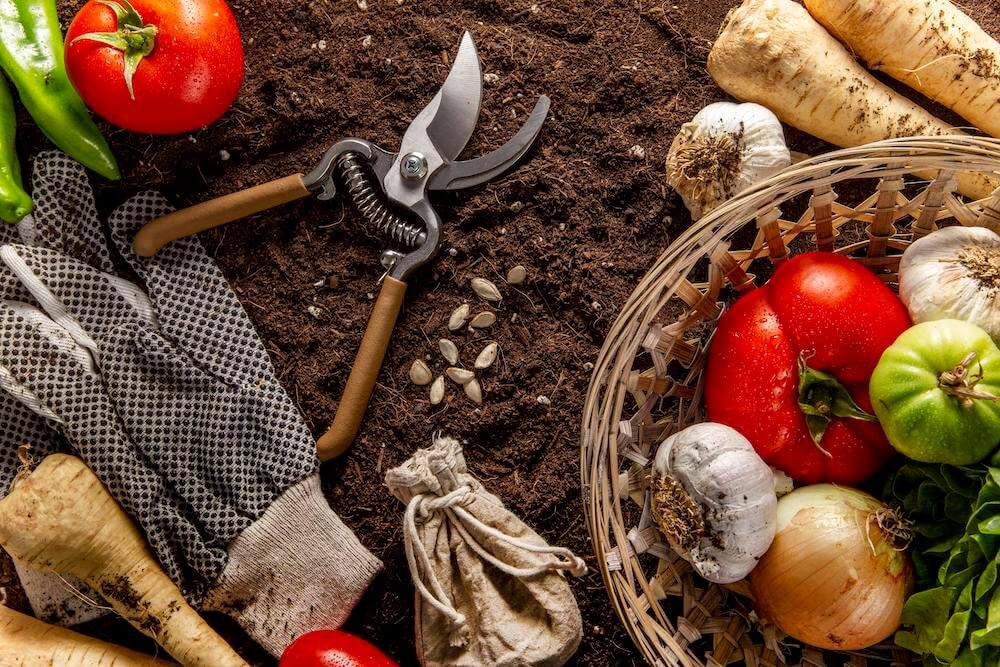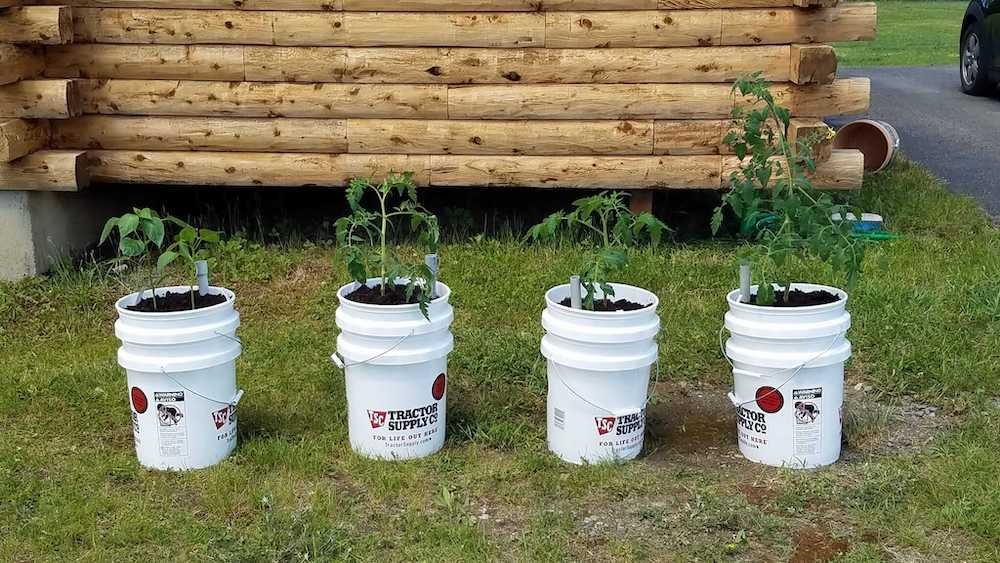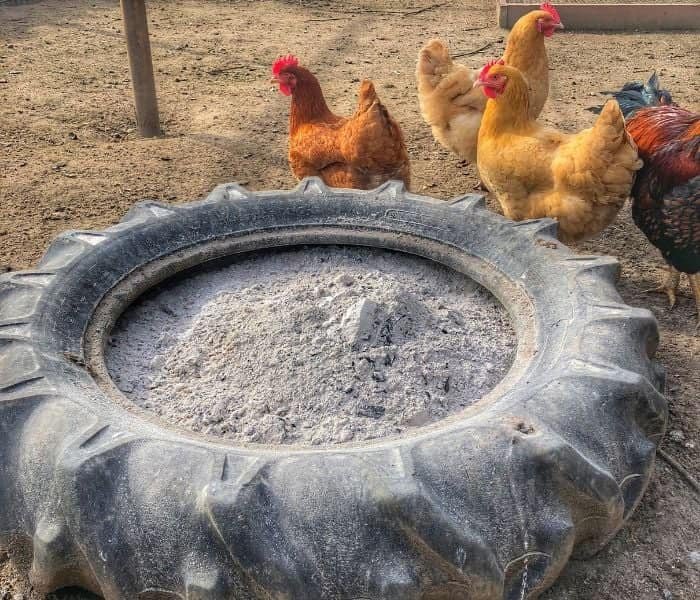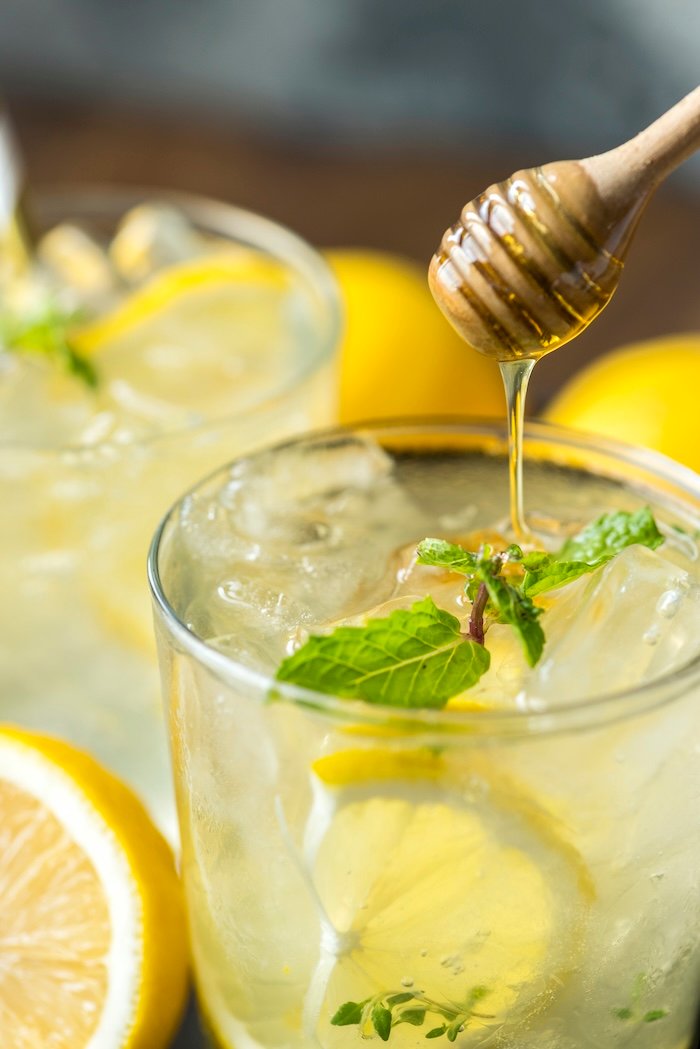How to Build an Effective DIY Fly Trap
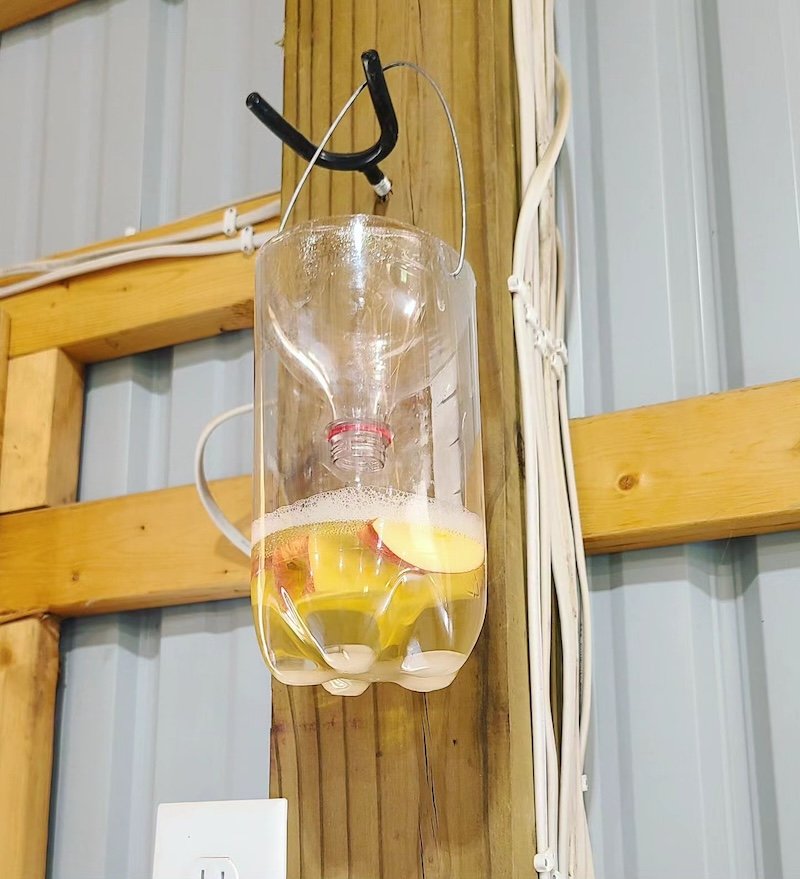
Nobody likes flies buzzing around their home. They’re annoying, they carry germs, and they just multiply so fast. Whether it’s house flies in the kitchen or fruit flies swarming your produce, a good DIY fly trap can really make a difference. This guide will show you how to make your own effective traps using stuff you probably already have. It’s quick, it’s cheap, and it works. We’ll cover both house flies and fruit flies, since they like different things. Let’s get rid of those pests!
Key Takeaways
- DIY fly traps are a super cost-effective way to get rid of flies.
- You can use common household items for both the trap and the bait.
- House flies and fruit flies need different kinds of bait to be attracted.
- Proper placement of your trap makes a big difference in how well it works.
- Regular maintenance, like changing the bait, keeps your traps working their best.
Why DIY Fly Traps Are Your Best Bet
Understanding Fly Behavior
To really get the upper hand on these buzzing pests, it helps to think like a fly. What attracts them? What are they looking for? Flies are drawn to a few key things: food, moisture, and warmth. Knowing this, we can craft traps that exploit these very needs. For instance, house flies are often lured by decaying organic matter, while fruit flies go crazy for, well, fruit. By understanding their preferences, we can make our traps irresistible.
The Science Behind The Trap
It’s not just about throwing some sweet stuff in a jar and hoping for the best. There’s actually a bit of science to it! Most DIY fly traps work by using a potent attractant to lure the flies in. Once they’re inside, they can’t get out, often due to a narrow opening or a liquid surface they can’t escape. The addition of dish soap is key because it breaks the surface tension of the liquid, causing the flies to sink and drown. It’s a simple but effective method that’s been used for ages. You can find DIY fly trap guides online.
Cost-Effective Solutions
Let’s face it, store-bought fly traps can be expensive, especially if you have a persistent fly problem. That’s where DIY traps really shine. We can whip up effective traps using items we probably already have around the house: old jars, vinegar, sugar, and dish soap. The savings can really add up over time, and we get the satisfaction of knowing we’re tackling the problem ourselves. Plus, it’s a more sustainable approach, as we’re reusing materials instead of constantly buying new plastic traps.
DIY fly traps are not only budget-friendly but also environmentally conscious. By repurposing household items, we reduce waste and minimize our reliance on commercially produced traps, which often contain harmful chemicals.
Gathering Your House Fly Trap Supplies
Alright, so you’re ready to wage war on those pesky house flies? Awesome! Before we dive into the trap-making process, let’s make sure we have all our ducks in a row. Gathering the right supplies is half the battle, trust us. We’ve tried doing this with missing ingredients, and it’s never pretty. Let’s get started!
Essential Ingredients For Success
Okay, so what do we really need to make this thing work? Well, the magic lies in the attractant. Here’s the breakdown:
- Vinegar: This is the base of our fly-attracting potion. Apple cider vinegar is usually recommended, but white vinegar can work in a pinch. The key is that flies are drawn to the fermented scent.
- Sugar: Because flies have a sweet tooth, just like us! The sugar adds another layer of temptation to our concoction.
- Water: This helps to dilute the mixture and ensures the flies can easily get trapped.
- Dish Soap: This is the secret weapon! A few drops of dish soap break the surface tension of the water, so when the flies land, they sink instead of just chilling on top.
Common Household Containers
Now, what are we going to put this magical mixture in? Don’t worry, you probably already have something perfect lying around. Here are a few ideas:
- Mason Jars: These are great because they’re sturdy and have a wide mouth, making it easy for flies to get in. Plus, they look kinda cute.
- Plastic Bottles: An empty soda or water bottle works just as well. Just cut off the top and invert it to create a funnel (more on that later).
- Old Mugs or Bowls: If you’re short on jars and bottles, a mug or bowl will do the trick. Just make sure it’s something you don’t mind sacrificing to the fly-catching cause.
Optional Tools For Assembly
Alright, so the ingredients and containers are the main event, but a few extra tools can make the whole process smoother. These are totally optional, but we highly recommend having them on hand:
- Scissors or a Knife: For cutting plastic bottles or creating entry points for the flies.
- Plastic Wrap: If you’re using a mug or bowl, plastic wrap can create a makeshift lid with small holes for the flies to enter.
- Rubber Bands or Tape: To secure the plastic wrap or inverted bottle top.
Having these tools ready will make the assembly process much easier and less frustrating. Trust us, you don’t want to be scrambling for scissors when you’re already halfway through mixing the attractant.
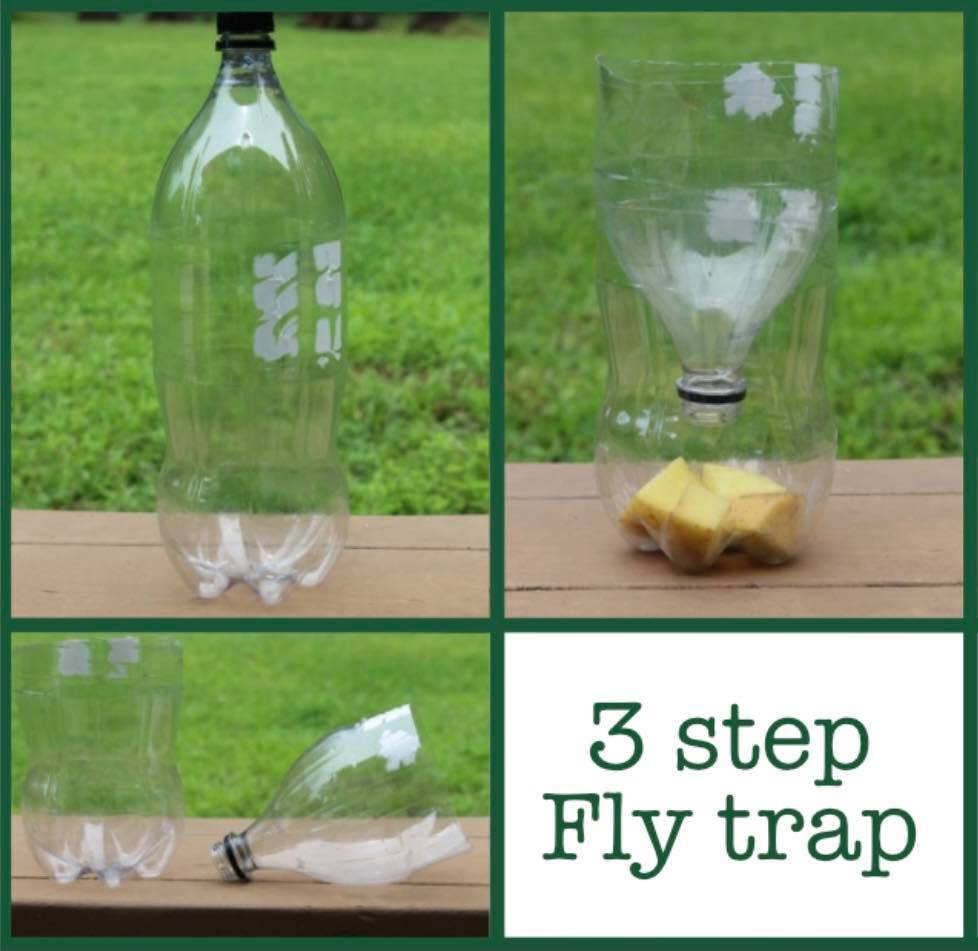
Crafting Your House Fly Trap
Mixing The Potent Attractant
Alright, let’s get down to the nitty-gritty – mixing the stuff that’ll actually lure those pesky house flies into our trap. We’ve found that a simple yet effective concoction does the trick. The key is to get the balance right between sweetness and that vinegar tang.
Here’s our go-to recipe:
- 1/4 cup of sugar (the sweet stuff they can’t resist)
- 1/2 cup of water (to dilute and help them drown)
- 3-4 inches of vinegar (apple cider or white vinegar works, but we prefer apple cider for that extra oomph)
- A few drops of dish soap (this breaks the surface tension, so they sink instead of swim)
Mix it all gently in a jar or container. No need to dissolve the sugar completely; just make sure everything is well combined. This mixture is what will attract the flies and ultimately trap them. Remember, a potent attractant is half the battle when it comes to DIY fly traps.
Setting Up The Trap Container
Now that we’ve got our fly-attracting potion, it’s time to set up the trap itself. You’ve got a few options here, depending on what you have lying around the house. A mason jar works great, but an old plastic bottle cut in half can also do the trick. The goal is to create a container that’s easy for flies to enter but difficult to exit.
Here’s how we usually do it:
- Mason Jar Method: Pour the mixture into the jar. Cover the top with plastic wrap, securing it with a rubber band. Poke a few small holes in the plastic wrap using a fork or toothpick. The flies can get in, but they’ll have a hard time finding their way out.
- Plastic Bottle Method: Cut the top third off the bottle. Invert this top part into the bottom part, creating a funnel. Secure it with tape. The flies will fly down into the bottle, but they won’t be able to fly back up and out.
- Open Container Method: If you don’t have plastic wrap or a bottle to cut, you can use an open container. The dish soap should break the surface tension enough to trap the flies, but this method is less effective at preventing escape.
We’ve found that the plastic bottle method tends to be the most effective, as it creates a more enclosed space and makes it harder for the flies to escape. But honestly, any of these methods will work in a pinch. Just make sure the flies can get in easily!
Strategic Placement For Maximum Catch
Okay, we’ve got our bait, we’ve got our trap – now where do we put it? This is where a little bit of fly psychology comes in handy. Flies are attracted to certain areas, so placing your trap strategically can make a huge difference in how many you catch. Think about where you usually see flies buzzing around. Those are the spots you want to target.
Here are some prime locations:
- Near doors and windows (where they’re likely to enter)
- Close to trash cans (a breeding ground for flies)
- In the kitchen, especially near fruit bowls or sinks
- Anywhere you’ve noticed a lot of fly activity
Also, consider the height of your trap. Flies tend to fly at a certain level, so placing your trap at that height can increase its effectiveness. We’ve found that placing the trap a few feet off the ground works well. Don’t be afraid to experiment with different locations until you find what works best for you. Remember to keep the homemade fly trap out of reach of children and pets, just to be safe.
Tackling The Fruit Fly Menace
Why Fruit Flies Are Different
Fruit flies, those tiny nuisances buzzing around your fruit bowl, are a different beast than your average house fly. They’re smaller, reproduce faster, and are attracted to different things. While house flies are drawn to decaying matter in general, fruit flies are specifically drawn to fermenting fruits and sugary substances. This difference in attraction is key to understanding how to effectively trap them. They can appear out of nowhere, seemingly materializing from thin air, but they’re usually hitching a ride on produce we bring into our homes.
Understanding Their Breeding Habits
Fruit flies have a ridiculously short life cycle. From egg to adult, it can take as little as a week! This means a few fruit flies can quickly turn into a full-blown infestation. They lay their eggs on the surface of ripe or rotting fruit, and the larvae feed on the fruit as they develop. This is why it’s so important to get rid of overripe fruit quickly. Also, they aren’t just limited to fruit; they can also breed in drains, garbage disposals, and even damp rags. Understanding their breeding habits is the first step in controlling their population. Here are some things to keep in mind:
- They breed rapidly in warm environments.
- A single female can lay hundreds of eggs.
- They are attracted to the smell of fermentation.
Identifying Problem Areas
To effectively combat fruit flies, we need to pinpoint where they’re coming from. Obvious places are fruit bowls and near the kitchen sink. But don’t forget to check less obvious spots. Inspect your pantry for forgotten potatoes or onions that might be starting to rot. Check under appliances for spills or crumbs. Even a small amount of spilled juice can become a breeding ground. By identifying these problem areas, we can target our trapping efforts and eliminate the source of the infestation.
Finding the source of the fruit flies is half the battle. Once you eliminate their breeding grounds, trapping becomes much more effective. Prevention is always better than cure, so keep your kitchen clean and your fruit fresh.
Sourcing Fruit Fly Trap Materials
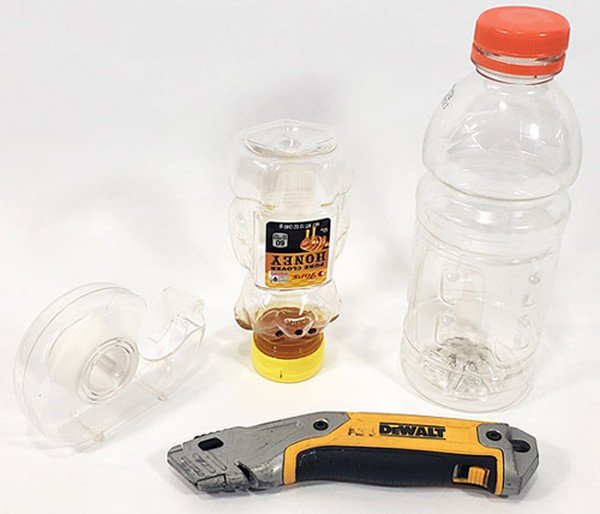
Okay, so we’re ready to gear up and gather everything we need to build some awesome fruit fly traps. The best part? Most of this stuff is probably already lying around your house. Let’s take a look at what we’ll need.
Key Attractants For Fruit Flies
When it comes to luring those pesky fruit flies, we’ve got a few tricks up our sleeves. The main thing is to use something they find irresistible. Here’s a breakdown:
- Apple Cider Vinegar (ACV): This is our star player. Fruit flies are seriously drawn to the fermented scent. It’s like their version of a five-star restaurant.
- Overripe Fruit: A banana peel, a slice of apple, or any piece of fruit that’s past its prime works wonders. The riper, the better!
- Wine or Beer: A little leftover wine or beer can also do the trick. They love the yeasty, fermented smells.
- Balsamic Vinegar: If you don’t have ACV, balsamic vinegar can be a decent substitute. It has a similar sweet and sour thing going on.
Simple Container Choices
Now, let’s talk about where we’re going to put our bait. We don’t need anything fancy here. Think simple and accessible. Here are some ideas for container choices:
- Mason Jars: These are great because they’re reusable and easy to clean. Plus, they look kind of cute.
- Plastic Cups: Any old plastic cup will do. Just make sure it’s clean.
- Bowls: Small bowls work well, especially if you’re using plastic wrap as a lid.
- Old Jars: Pickle jars, jam jars – anything you’ve got lying around. Recycling at its finest!
Tools For Trap Construction
Alright, last but not least, let’s gather the tools we’ll need to put these traps together. Don’t worry, it’s nothing complicated.
- Plastic Wrap: This is for covering our containers and creating a barrier that traps the flies.
- Rubber Bands: To secure the plastic wrap tightly around the container.
- Fork or Skewer: For poking small holes in the plastic wrap. This is how the flies get in (but can’t get out!).
- Tape: If you’re not using plastic wrap, tape can help secure a paper cone or other makeshift lid.
Remember, the goal here is simplicity and effectiveness. We’re not trying to win any design awards, just get rid of those annoying fruit flies! So, gather your supplies, and let’s get trapping!
Building Your Fruit Fly Trap
Preparing The Fruit Fly Bait
Okay, so we’ve got our materials, now it’s time to get cooking… well, not really cooking. More like mixing! The bait is what’s going to lure those annoying fruit flies into our trap, so it’s important to get it right. The key here is something sweet and fermented – fruit flies can’t resist it.
Here are a few options we can try:
- Apple Cider Vinegar (ACV): This is a classic for a reason. It’s got that sweet-sour thing going on that fruit flies love. Pour about 1/2 cup into your chosen container. You can find apple cider vinegar at most grocery stores.
- Wine or Beer: Got some leftover wine or beer that’s gone a little flat? Perfect! Pour a similar amount as you would with ACV. The older and fruitier, the better.
- Overripe Fruit: Got a banana that’s past its prime? Mash it up and put a spoonful or two in the container. This works great, especially if that’s what’s attracting them in the first place.
For an extra kick, we can add a drop or two of dish soap to any of these mixtures. The soap breaks the surface tension of the liquid, so when the flies land, they sink and can’t escape. It’s a bit cruel, but hey, they were eating our fruit!
Assembling The Trap Design
Alright, we’ve got our bait, now let’s put this trap together. There are a few ways we can go about this, depending on what we’ve got on hand. Remember, the goal is to make it easy for the flies to get in, but hard for them to get out.
- The Plastic Wrap Method: This is super simple. We take our container (a jar, a cup, whatever), pour in the bait, and then stretch plastic wrap tightly over the top. Secure it with a rubber band. Then, using a fork or toothpick, poke a few small holes in the plastic wrap. The flies can get in through the holes, but they’ll have a hard time finding their way back out.
- The Paper Cone Method: Grab a piece of paper and roll it into a cone. The narrower the opening at the bottom, the better. Place the cone into the container with the tip pointing down, but not touching the liquid. The flies will fly down the cone towards the bait, and then struggle to fly back up and out.
- The Bottle Trap: Cut the top off a plastic bottle and invert it into the bottom half, creating a funnel. Secure it with tape. The flies will fly in, but have trouble escaping the narrow opening.
No matter which method we choose, the key is to make sure there’s only one way in, and that way is nice and obvious to the flies. We want to lure them in, not confuse them.
Optimal Locations For Fruit Fly Traps
So, we’ve built our trap, now where do we put it? Placement is key to catching those pesky fruit flies. We need to think like a fruit fly – where would we hang out if we were a tiny, annoying insect?
Here are some prime locations:
- Near Fruit Bowls: This is a no-brainer. If we’ve got a bowl of fruit on the counter, that’s probably where the flies are congregating. Place the trap right next to the bowl.
- By the Sink: Fruit flies love damp, dark places, so the sink drain is a popular spot. Put a trap nearby to catch any that are hanging around.
- Near Trash Cans: If we’ve got a trash can in the kitchen, especially one with food scraps, that’s another prime location. Place the trap close by, but not so close that it gets knocked over.
- Anywhere We See Flies: If we notice fruit flies buzzing around in a particular area, that’s a good indication that we should put a trap there. Don’t be afraid to move the traps around until we find the sweet spot. Remember to keep an eye on our aphid spray too, to make sure they aren’t attracting more flies.
We should check the traps every day or two to see how many flies we’ve caught. If we’re not catching many, we might need to adjust the bait or the location of the trap. With a little patience and persistence, we’ll be fruit fly-free in no time!
Maintaining Your DIY Fly Traps
When To Refresh Your Mixture
Okay, so you’ve got your fly traps set up, and they’re doing their thing. But how long do these things actually last? Well, it’s not a “set it and forget it” kind of deal. We’ve found that the effectiveness of your fly trap really depends on a few factors: the type of bait you’re using, the surrounding temperature, and, of course, how many flies you’re catching. Generally, you’ll want to refresh your mixture every 5-7 days. However, if you notice the trap is full of dead flies or the liquid has become murky, it’s time for a change, even if it hasn’t been a full week.
- Check your traps every other day.
- Look for cloudiness or a foul odor.
- Replace the mixture more frequently in warmer weather.
It’s a good idea to keep an eye on your traps. A neglected trap can actually become a breeding ground if you let it sit too long. Nobody wants that!
Cleaning And Reusing Your Traps
Once you’ve emptied out your old fly trap mixture, don’t just toss the whole thing! We’re all about being resourceful, right? Cleaning and reusing your traps is super easy and saves you from constantly making new ones. First, give the container a good rinse with hot, soapy water. Make sure you get rid of any lingering residue or dead flies. If you’re using a container with small openings, like a bottle with a funnel, you might need a bottle brush to get into those hard-to-reach spots. After washing, let the container dry completely before refilling it with a fresh batch of bait. This helps prevent mold or bacteria from growing inside. By cleaning and reusing, you’re not only saving money but also reducing waste – win-win!
- Rinse thoroughly with hot, soapy water.
- Use a bottle brush for hard-to-reach areas.
- Ensure the container is completely dry before refilling.
Troubleshooting Common Issues
Sometimes, even with the best intentions, your fly traps might not work as effectively as you’d hoped. Don’t worry; it happens! One common issue is that the flies simply aren’t attracted to the bait. If this is the case, try experimenting with different attractants. For house flies, a mix of sugar and vinegar usually does the trick, but you could also add a bit of overripe fruit or even a small piece of meat. For fruit flies, apple cider vinegar is usually the go-to, but you can also try adding a splash of beer or wine. Another issue could be the placement of your traps. Make sure you’re putting them in areas where flies are most active, such as near garbage cans, fruit bowls, or windows. Also, consider the surrounding environment. If there are other strong smells competing with your trap, it might not be as effective. Finally, make sure the entrance to your trap is easily accessible for the flies. If it’s too small or obstructed, they might not be able to get in.
- Experiment with different attractants.
- Adjust the placement of your traps.
- Ensure easy access to the trap entrance.
Conclusion
So, making your own fly trap is a pretty smart move. It’s easy, cheap, and really gets rid of those annoying house flies or fruit flies. Seriously, these homemade traps take like five minutes to put together and start working super fast. Just remember to clear out any old food or wet spots, clean your trash cans often, and swap out the trap mixture every week. Give both trap types a shot and see which one works best for your place. Let us know how it goes in the comments!
Frequently Asked Questions
What’s the best bait for a fly trap?
For house flies, a mix of vinegar, sugar, and water works best. For fruit flies, apple cider vinegar is usually enough because it smells like fermented fruit.
Can I use white vinegar instead of apple cider vinegar?
Yes, you can use white vinegar, but apple cider vinegar is better for fruit flies because of its fruity smell.
How long does a homemade fly trap last?
You should change the vinegar-sugar mix every 5 to 7 days, or sooner if it’s full of flies.
Are these traps safe for kids or pets?
These traps are safe because they don’t use harmful chemicals. But it’s always a good idea to keep them out of reach of small children and pets.
Do DIY fly traps work better than store-bought traps?
Often, yes! DIY traps work just as well and cost a lot less over time. Plus, you can change them to catch the specific type of flies you have.
How can I make my fly trap even more effective?
To get rid of flies for good, make sure to clean up any food spills, empty trash cans often, and change your trap mixture regularly.




